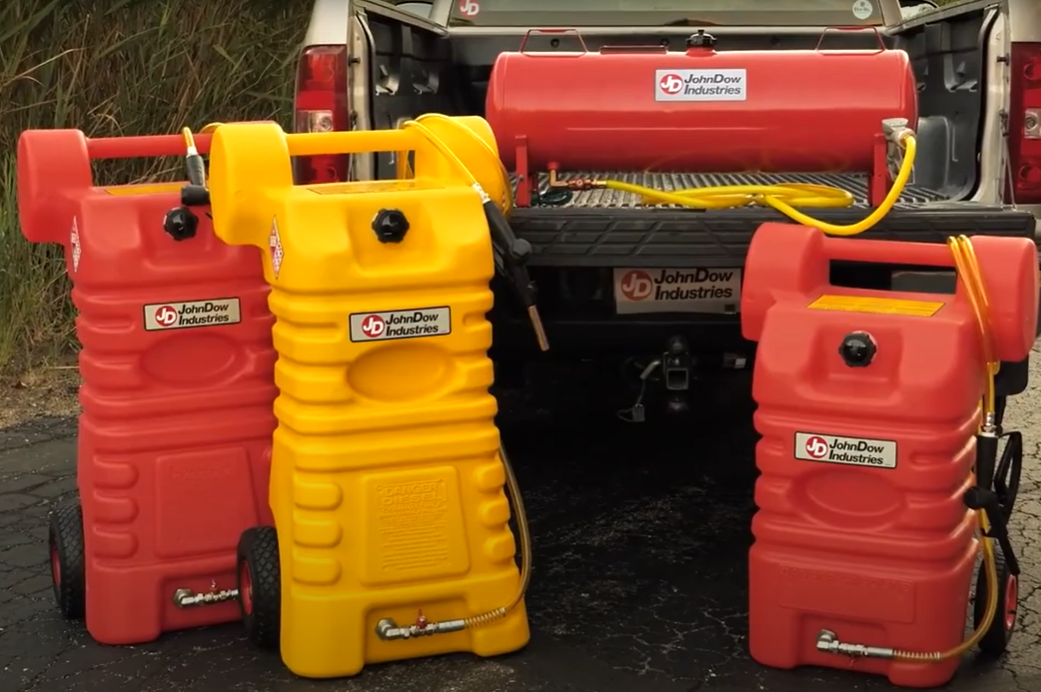Traveling with fuel requires extra precautions to ensure safety and prevent catastrophic accidents. Whether you're transporting small quantities of fuel for personal use or larger amounts for specific purposes, such as camping or work-related activities, make sure to follow these guidelines to travel safely with fuel:
-
Check Local Regulations: Before planning your trip, familiarize yourself with local laws and regulations regarding the transportation of fuel. Different jurisdictions may have specific requirements or restrictions, such as quantity limits, container types, and/or permits. Ensure you comply with all applicable regulations to avoid legal issues.
-
ONLY Use Approved Containers: Use fuel containers specifically designed and approved for transportation, like JohnDow's UN/DOT Approved Poly Fuel Caddies. Look for containers made of sturdy materials like high-density polyethylene (HDPE) that are resistant to leaks, spills, and fire hazards. Ensure containers are secure and can properly seal to prevent fuel leakage.
-
Properly Label Containers: Clearly label your fuel containers with appropriate warnings and information, like the type of fuel inside and hazard symbols. This ensures anyone handling the containers is aware of the contents and the necessary precautions to take.
-
Secure Containers and Prevent Spills: During travel, secure fuel containers in a well-ventilated area of your vehicle. Make sure containers are upright and tightly sealed to prevent spills or leaks. Use bungee cords, straps, or cargo nets to secure containers and minimize movement during transit.
-
DO NOT Smoke or Expose an Open Flame Near Fuel Containers: Never smoke or allow anyone to smoke by the vehicle when transporting fuel. Even small sparks or flames can ignite fuel vapors and cause a fire or explosion. Additionally, keep fuel containers away from any open flames, heat sources, or sources of ignition.
-
Be Prepared for Emergencies: Carry a fire extinguisher in your vehicle suitable for extinguishing fuel fires. Familiarize yourself with its operation and keep it easily accessible. Additionally, have a well-stocked emergency kit that includes items like a first aid kit, flashlight, reflective triangles, and a safety vest.
Remember, safety should always be the top priority when traveling with fuel. By following these guidelines and exercising caution, you can minimize the risks associated with transporting fuel and ensure a safe journey.
